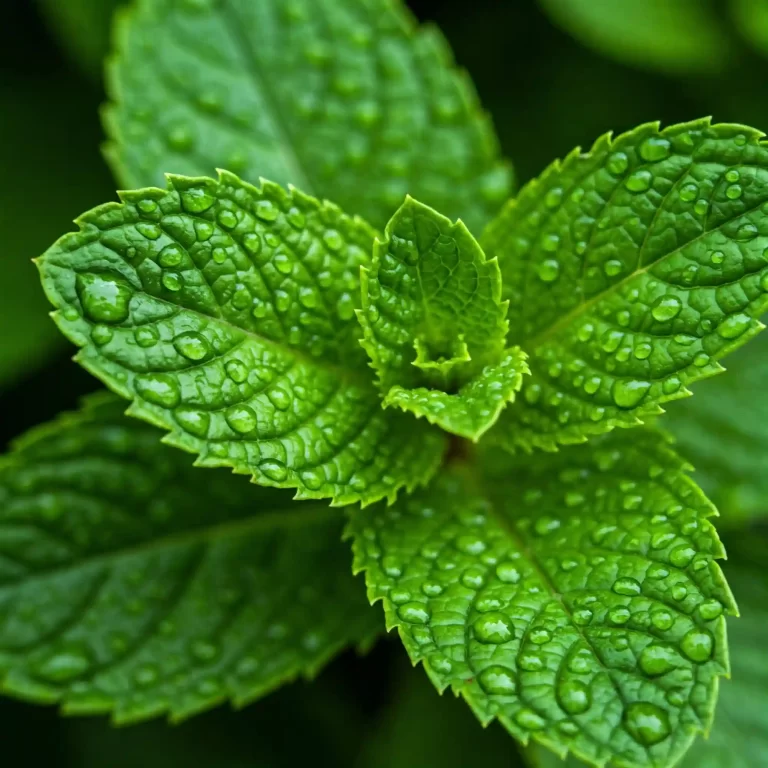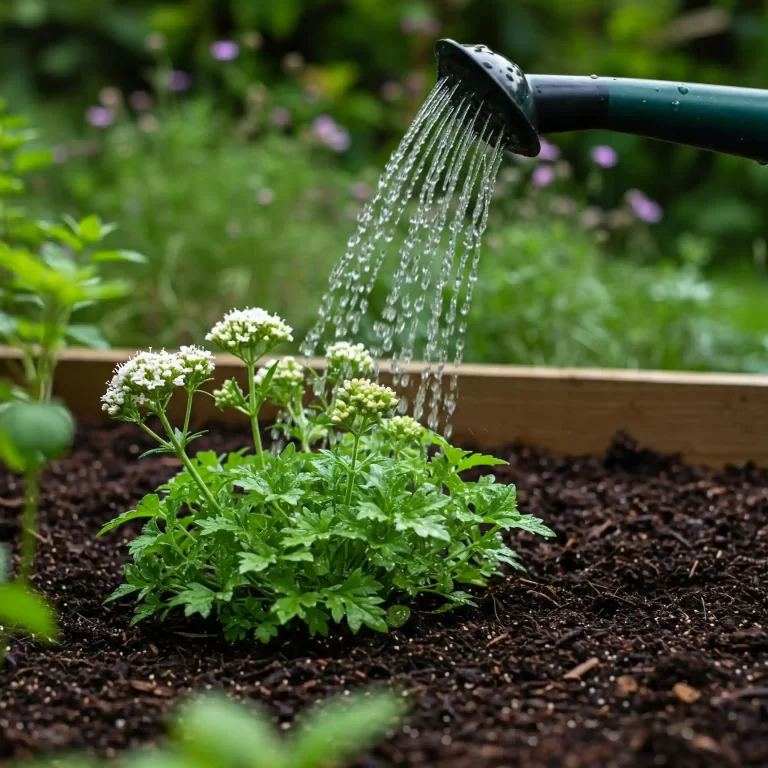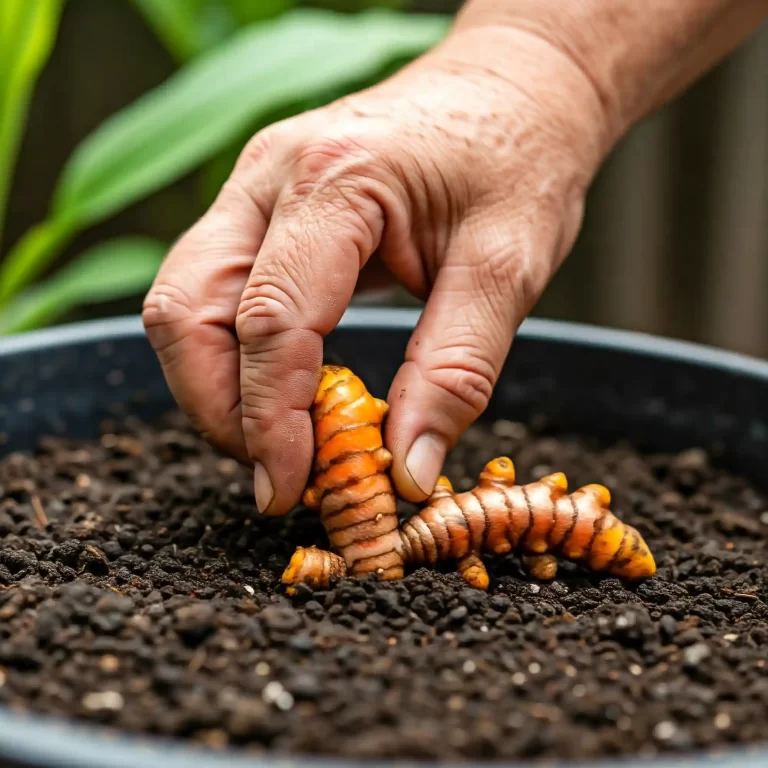Are you looking to add a unique and potentially beneficial herb to your garden? Many gardeners I’ve spoken with express a desire to grow plants with multiple uses, something that’s both beautiful and potentially helpful for their well-being. Perhaps you’ve heard whispers about astragalus and its purported health benefits, and you’re curious about cultivating it yourself. You might be wondering if it’s even possible to grow this seemingly exotic herb in your own backyard. Well, I’m here to tell you that it absolutely is! In this comprehensive guide, I’ll share my experience and knowledge on how to grow astragalus herbs successfully, even if you’re just starting your gardening journey. We’ll explore everything from seed starting to harvesting, providing you with practical tips and techniques to nurture these fascinating plants. Growing your own astragalus can be a rewarding experience, providing you with fresh herbs and a deeper connection to the natural world. Let’s dive in and discover the secrets to growing thriving astragalus plants.
Understanding Astragalus: A Quick Overview
Let’s start with the basics. What exactly is astragalus? Astragalus is a genus of flowering plants belonging to the legume family (Fabaceae). This vast genus encompasses thousands of species, but when we talk about astragalus in the context of herbalism and gardening, we’re typically referring to Astragalus membranaceus, also known as milkvetch or huáng qí in Traditional Chinese Medicine (TCM). It’s important for you to know that not all astragalus species are used medicinally, so focusing on Astragalus membranaceus if your interest lies in its potential health benefits is key.
From my experience, understanding a plant’s origins often helps in cultivating it successfully. Astragalus is native to temperate regions of the Northern Hemisphere, particularly in Asia. It has a long history of use in TCM, where its root has been valued for its adaptogenic properties. This means it’s believed to help the body adapt to stress. While this article focuses on how to grow astragalus herbs, it’s worth noting that its potential health benefits have contributed to its growing popularity among home gardeners like you. However, I must emphasize that this article is about cultivation, and you should always consult with a qualified healthcare professional before using astragalus for any medicinal purposes.
Why would you want to grow astragalus? For me, the primary joy of gardening is the connection it fosters with nature and the satisfaction of nurturing a plant from seed to maturity. Growing your own astragalus allows you to experience this firsthand. Plus, having fresh herbs readily available for culinary or other uses is a fantastic bonus. Even if you’re not interested in its traditional uses, astragalus is a beautiful perennial plant that can add visual interest to your garden. Its delicate flowers and attractive foliage make it a worthy addition to any herb garden or mixed border.
Comparison of Common Astragalus Species
| Species | Common Name | Primary Use | Growing Habit |
| Astragalus membranaceus | Milk Vetch, Huang Qi | Traditional Chinese Medicine (root), immune support | Perennial |
| Astragalus propinquus | Fewflower Milkvetch | Similar uses to A. membranaceus | Perennial |
| Astragalus glycyphyllos | Wild Licorice | Not typically used medicinally, ornamental value | Perennial |
This table highlights the key differences between some common Astragalus species. It’s important to select the correct species if you intend to use the plant for specific purposes.
Benefits of Growing Your Own Herbs
- Freshness: Enjoy herbs at their peak flavor and nutritional value.
- Cost-effectiveness: Save money compared to buying fresh herbs from the store.
- Control: Know exactly how your herbs were grown (organic, no pesticides, etc.).
- Therapeutic: The act of gardening itself is known to reduce stress and improve well-being.
- Educational: Learn more about plant life cycles and the natural world.
How to Plant Astragalus Herbs: From Seed to Seedling
Now that you have a basic understanding of astragalus, let’s get our hands dirty and talk about planting! From my experience, the most common way to propagate astragalus is from seed. While you might occasionally find established plants at nurseries specializing in herbs, starting from seed offers a greater selection of varieties and is often more budget-friendly. Plus, there’s something incredibly rewarding about watching a tiny seed grow into a thriving plant.
How to Start Astragalus Seeds:
Astragalus seeds have a hard outer coating, which can sometimes hinder germination. This is where a process called scarification comes in. Scarification involves gently damaging the seed coat to allow water to penetrate and initiate germination. Here are a couple of methods you can use:
- Nicking: Using a sharp knife or nail file, carefully nick the seed coat. Be careful not to damage the inner part of the seed.
- Sanding: Gently rub the seeds with sandpaper or on a rough surface like a brick.
After scarification, I recommend soaking the seeds in lukewarm water for 24 hours. This further softens the seed coat and improves germination rates.
You have two options for starting your astragalus seeds: indoors or direct sowing outdoors.
Starting Seeds Indoors:
Starting seeds indoors gives you a head start, especially if you live in a region with a shorter growing season. Here’s what I do:
- Timing: Start your seeds indoors 6-8 weeks before the last expected frost in your area.
- Seed Starting Mix: Use a well-draining seed starting mix. You can find this at most garden centers.
- Containers: Use small pots or seed trays with drainage holes.
- Planting: Sow the seeds about ¼ inch deep in the soil.
- Light: Place the containers in a warm, sunny location or under grow lights.
- Moisture: Keep the soil consistently moist but not waterlogged.
Direct Sowing Outdoors:
If you prefer, you can sow astragalus seeds directly into your garden bed. Here’s how:
- Timing: Sow the seeds in the spring after the last frost has passed and the soil has warmed up.
- Soil Preparation: Prepare the garden bed by loosening the soil and amending it with compost or other organic matter.
- Planting: Sow the seeds about ½ inch deep in the soil.
- Spacing: Space the seeds about 6-12 inches apart.
- Watering: Water the area gently after sowing.
How to Transplant Astragalus Seedlings:
Once your seedlings have developed a few sets of true leaves and the danger of frost has passed, it’s time to transplant them into their permanent home in the garden.
- When to Transplant: Choose a cloudy day or late afternoon to minimize transplant shock.
- Preparing the Garden Bed: Ensure the garden bed is well-drained and has been amended with compost.
- Transplanting Techniques:
- Gently remove the seedlings from their containers, being careful not to damage the roots.
- Dig a hole slightly larger than the root ball.
- Place the seedling in the hole and gently backfill with soil.
- Water thoroughly after transplanting.
I’ve found that astragalus prefers a sunny location with well-drained soil. It’s also relatively drought-tolerant once established, which is good news if you sometimes forget to water (we’ve all been there!).
How to Grow Astragalus Herbs: Essential Care Tips
Now that your astragalus seedlings are happily settled in their garden home, let’s discuss how to provide them with the care they need to flourish. From my experience, astragalus is a relatively low-maintenance plant once established, but a few key practices will ensure optimal growth and health.
How to Water Astragalus:
One of the most common mistakes I see gardeners make is overwatering. Astragalus prefers well-drained soil and is susceptible to root rot if it sits in soggy conditions. Here are some watering tips:
- Water deeply but infrequently: When you water, water thoroughly so that the water reaches the roots. Then, allow the soil to dry out somewhat before watering again.
- Water at the base of the plant: Avoid wetting the foliage, as this can encourage fungal diseases.
- Consider your climate: If you live in a dry climate, you may need to water more frequently than if you live in a humid climate.
How to Provide Sunlight for Astragalus:
Astragalus thrives in full sun, which means at least 6 hours of direct sunlight per day. However, it can also tolerate partial shade, especially in hotter climates. If you live in a region with intense summer heat, providing some afternoon shade can help prevent your astragalus plants from getting stressed.
How to Fertilize Astragalus:
Astragalus is a legume, which means it can fix nitrogen from the atmosphere. This means it doesn’t require heavy fertilization. In fact, over-fertilizing can actually harm your astragalus plants. Here are some fertilization tips:
- Amend the soil with compost: Before planting, amend your garden bed with compost or other organic matter. This will provide your astragalus plants with a slow-release source of nutrients.
- Avoid high-nitrogen fertilizers: These can encourage excessive foliage growth at the expense of root development.
- Use a balanced fertilizer sparingly: If you feel the need to fertilize, use a balanced fertilizer diluted to half strength.
How to Control Pests and Diseases:
Astragalus is relatively pest and disease-free, but a few issues can arise:
- Aphids: These small insects can suck the sap from your astragalus plants. You can control them with a strong spray of water or by introducing beneficial insects like ladybugs.
- Root rot: This fungal disease can occur in waterlogged soil. To prevent it, ensure your soil is well-drained and avoid overwatering.
Essential Care Tips for Astragalus
- Water deeply but infrequently.
- Provide full sun to partial shade.
- Amend the soil with compost.
- Avoid over-fertilizing.
- Monitor for pests and diseases.
How to Harvest and Dry Astragalus Root
Now, let’s talk about harvesting. If you’re growing astragalus for its root, which is the primary part used in traditional herbalism, patience is key. It typically takes 2-3 years for the roots to reach a size suitable for harvesting. This waiting period allows the plant to establish a strong root system and accumulate the beneficial compounds it’s known for.
When to Harvest Astragalus Root:
The best time to harvest astragalus root is in the fall, after the plant has finished flowering and the foliage begins to die back. This is when the root’s energy and beneficial compounds are at their peak.
How to Harvest the Root Carefully:
Harvesting astragalus root requires a bit of care to avoid damaging the plant. Here’s what I do:
- Loosen the soil: Use a garden fork or shovel to carefully loosen the soil around the base of the plant.
- Gently lift the plant: Carefully lift the plant from the ground, taking care not to break the roots.
- Clean the roots: Remove any excess soil from the roots by gently brushing them or rinsing them with water.
How to Clean and Dry Astragalus Root for Storage:
Proper drying is essential to prevent mold and preserve the quality of the astragalus root. Here’s my preferred method:
- Wash the roots: Thoroughly wash the roots to remove any remaining dirt.
- Slice the roots: Cut the roots into thin slices or smaller pieces. This will help them dry more quickly.
- Dry the roots: You can dry the roots in a dehydrator, in a low-temperature oven (around 150°F or 65°C), or by air-drying them in a warm, dry place with good air circulation.
- Store the dried roots: Once the roots are completely dry, store them in an airtight container in a cool, dark place.
Tools for Harvesting and Drying Astragalus Root
- Garden fork or shovel
- Garden gloves
- Knife or pruning shears
- Brush or water hose
- Dehydrator (optional)
- Airtight containers
Growing Astragalus Herbs in Different Climates
Astragalus is a relatively adaptable plant, but like all plants, it has its preferences. Understanding how climate affects astragalus growth is crucial for success, especially if you live in an area with extreme temperatures or weather patterns. From my experience, knowing your hardiness zone is the first step to ensuring your plants thrive.
Astragalus Hardiness Zones:
Astragalus is generally hardy in USDA plant hardiness zones 4-8. This means it can tolerate cold winters and hot summers within this range. However, specific varieties may have slightly different hardiness. It’s always a good idea to check the plant tag or seed packet for specific information.
Tips for Growing Astragalus in Colder Climates:
If you live in a colder climate with harsh winters, here are some tips to help your astragalus plants survive:
- Mulching: Apply a thick layer of mulch around the base of the plants in the fall. This will help insulate the roots and protect them from freezing temperatures.
- Winter protection: In very cold regions, you may need to provide additional winter protection, such as covering the plants with a frost blanket or burlap.
- Choose appropriate varieties: Select astragalus varieties that are known to be particularly cold-hardy.
Tips for Growing Astragalus in Warmer Climates:
If you live in a warmer climate with hot summers, here are some tips to help your astragalus plants thrive:
- Provide shade: In areas with intense summer heat, providing some afternoon shade can help prevent your astragalus plants from getting stressed.
- Adequate watering: Ensure your plants receive adequate water during hot, dry periods.
- Well-drained soil: Well-drained soil is crucial in warmer climates to prevent root rot, especially during periods of heavy rainfall.
Astragalus Care by Climate
| Climate | Key Considerations | Specific Tips |
| Cold Climates | Winter hardiness, frost protection | Mulch heavily, provide winter covering, choose cold-hardy varieties |
| Warm Climates | Heat stress, adequate watering, well-drained soil | Provide afternoon shade, water deeply during dry periods, ensure good drainage |
| Temperate Climates | Generally well-suited, minimal extra care required | Monitor for pests and diseases, adjust watering based on rainfall |
This table summarizes the key considerations and specific tips for growing astragalus in different climates. By adapting your care practices to your specific climate, you can maximize your chances of success.
FAQ Section: Your Astragalus Growing Questions Answered
I’ve compiled a list of frequently asked questions about growing astragalus herbs, based on my experience and the questions I often receive from fellow gardeners. I hope these answers provide further clarity and help you on your astragalus growing journey.
How to grow astragalus herbs from seed indoors?
Starting astragalus from seed indoors is a great way to get a head start on the growing season, especially if you live in a colder climate. Here’s a quick recap:
- Scarify the seeds by nicking or sanding them.
- Soak the seeds in lukewarm water for 24 hours.
- Sow the seeds in a well-draining seed starting mix about 6-8 weeks before the last expected frost.
- Keep the soil moist and provide plenty of light.
- Transplant the seedlings outdoors after the danger of frost has passed.
What is the best way to grow astragalus herbs organically?
Growing astragalus organically involves using natural methods and avoiding synthetic chemicals. Here are some key practices:
- Amend the soil with compost and other organic matter.
- Use organic fertilizers sparingly.
- Control pests with natural methods like handpicking or introducing beneficial insects.
- Practice crop rotation to prevent soilborne diseases.
How to grow astragalus herbs in pots for beginners?
Growing astragalus in pots is a good option if you have limited garden space or prefer container gardening. Here are some tips:
- Choose a pot that is at least 12 inches in diameter to accommodate the root system.
- Use a well-draining potting mix.
- Place the pot in a sunny location.
- Water regularly but avoid overwatering.
How to grow and harvest astragalus herbs for medicinal use?
If you’re interested in growing astragalus for its medicinal properties, here are some things to keep in mind:
- Focus on growing Astragalus membranaceus, the species most commonly used in herbal medicine.
- Harvest the roots in the fall after the plant has finished flowering.
- Dry the roots thoroughly before storing them.
- Consult with a qualified healthcare professional before using astragalus for any medicinal purposes.
How to grow astragalus herbs in cold climates with success?
Growing astragalus in cold climates requires some extra care to protect the plants from freezing temperatures. Here are some tips:
- Choose cold-hardy varieties.
- Mulch heavily around the base of the plants in the fall.
- Provide additional winter protection, such as covering the plants with a frost blanket.
I hope these FAQs have addressed some of your questions about growing astragalus herbs. If you have any further questions, please feel free to leave a comment below.
Conclusion
Growing astragalus herbs can be a rewarding experience, providing you with fresh herbs and a deeper connection to the natural world. By following the tips and techniques outlined in this guide, you can successfully cultivate these fascinating plants in your own garden. Remember to be patient, observe your plants, and adapt your care practices as needed. With a little time and effort, you’ll be enjoying the beauty and potential benefits of astragalus for years to come.
I encourage you to start your own astragalus patch and experience the joy of growing this unique herb. If you have any questions or experiences to share, please leave a comment below. Happy gardening!
.




